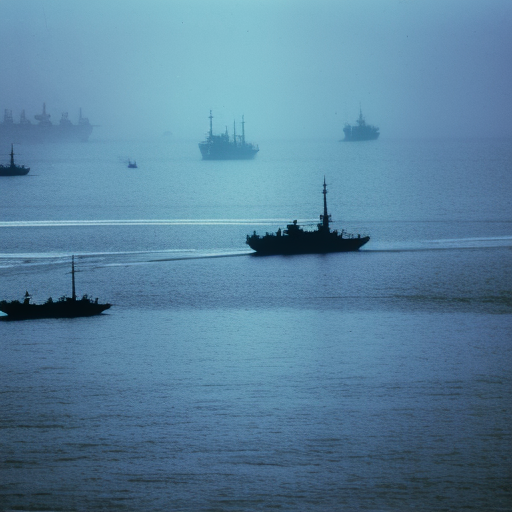Battle of the Yellow Sea: A Decisive Naval Engagement in the Russo-Japanese War
The Battle of the Yellow Sea, fought on August 10, 1904, was a significant naval engagement during the Russo-Japanese War. It took place near the Yellow Sea, off the coast of the Korean Peninsula. The battle was a decisive victory for the Japanese, who successfully crippled the Russian fleet and established their dominance in the region.
Background: The Russo-Japanese War was a conflict between the Russian Empire and the Empire of Japan over territorial disputes in East Asia. Japan sought to expand its influence in the region, particularly in Korea and Manchuria, while Russia aimed to maintain its control over these territories. The Battle of the Yellow Sea was a crucial moment in this war, as it determined the control of the sea and the fate of the Russian fleet.
Naval Forces: The Japanese fleet, commanded by Admiral Togo Heihachiro, consisted of four battleships, twelve cruisers, and seventeen destroyers. The Russian fleet, under the command of Admiral Wilgelm Vitgeft, comprised eight battleships, four cruisers, and nine destroyers. The Japanese had a numerical advantage, but the Russian ships were generally larger and more heavily armed.
The Battle: The battle began when the Russian fleet attempted to break through the Japanese blockade of Port Arthur, a strategic naval base in northeastern China. The Japanese fleet intercepted the Russians, and a fierce engagement ensued. The Japanese utilized their superior speed and maneuverability to outflank the Russian ships, subjecting them to concentrated fire.
The battle lasted for several hours, with both sides exchanging heavy gunfire. The Japanese employed a tactic known as “crossing the T,” which allowed them to bring the maximum number of guns to bear on the Russian ships while minimizing their own exposure. This tactic proved highly effective, causing significant damage to the Russian fleet.
The Russian battleship Tsarevich was one of the primary targets of the Japanese assault. It suffered severe damage, including a hit to its ammunition magazine, which caused a massive explosion. The battleship Retvizan was also heavily damaged and had to be scuttled by its crew to prevent capture. The Japanese battleships Mikasa and Shikishima played a crucial role in the battle, inflicting heavy losses on the Russian fleet.
Outcome: The Battle of the Yellow Sea resulted in a decisive victory for the Japanese. The Russian fleet suffered significant losses, with three battleships and one cruiser sunk, and several other ships heavily damaged. The Japanese, on the other hand, only lost a single destroyer. The Russian defeat severely weakened their naval power in the region and allowed the Japanese to maintain their blockade of Port Arthur.
The battle also had broader implications for the Russo-Japanese War. The Japanese victory demonstrated their naval superiority and boosted their morale. It also forced the Russians to reconsider their strategy and focus on defending Port Arthur rather than attempting to break the blockade. This diversion of resources ultimately contributed to the Russian defeat in the subsequent Battle of Mukden and the overall outcome of the war.
Conclusion: The Battle of the Yellow Sea was a pivotal moment in the Russo-Japanese War. The Japanese victory established their dominance in the region and severely weakened the Russian fleet. The battle showcased the effectiveness of Japanese naval tactics and highlighted the importance of speed and maneuverability in naval warfare. Ultimately, the Battle of the Yellow Sea played a significant role in shaping the outcome of the war and solidifying Japan’s position as a rising power in East Asia.












